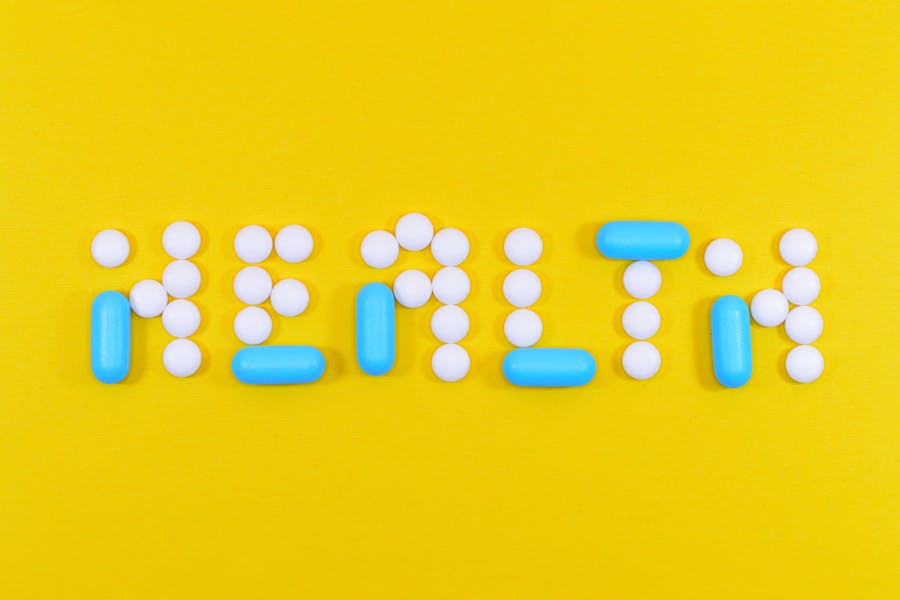Early in 2019, the judge agreed with the jury that there was evidence glyphosate from the weed killer, RoundUp, “was a substantial factor” in Alva and Alberta Pilliod developing non-Hodgkin’s lymphoma, a lymphatic system cancer. The couple had been using the herbicide for more than three decades.
According to the court, there was evidence the makers of the herbicide knew the active ingredient — glyphosate — was harmful. And the company didn’t have warnings on the product to sufficiently inform the couple of its health dangers, particularly cancer. (1)
The judge awarded the California couple $86.7 million in damages from glyphosate.
This case isn’t the only one. The manufacturer of the herbicide has been challenged with more than 13,000 U.S. lawsuits related to suspected cancer risks of the product. (2)
Glyphosate-based weed killers are the most widely used herbicides in the world. Yet, the makers of glyphosate maintain that it’s safe and doesn’t cause health issues. And countless people continue to use it on crops, forest areas, and lawns. (3)
However, research suggests that glyphosate is dangerous to people, especially as it accumulates in the body over time. Not only may it increase the risk of cancer, but it may also lead to other organ disease and dysfunction. (4, 5, 6)
Here are 10 ways glyphosate could be harming health and how to detoxify it from the body.
1. Brain and Nervous System Disorders
As you know, glyphosate could disrupt the gut microbiota, potentially leading to intestinal issues. However, the microbes in the gut are connected to the brain via the microbiota-gut-brain axis. So, altering the microbiota may also affect mental health and brain function.
For example, anxiety disorders have been rising. This may be related to the increased use of glyphosate. Anxiety disorders have increased at a similar rate to glyphosate use in recent decades. (5, 7, 8)
The concentration of Lactobacillus in the gut could be lowered by glyphosate. Some species of bacteria produce a neurotransmitter called GABA or gamma-aminobutyric acid that helps calm the nervous system. (5, 9, 10)
Without enough GABA, your anxiety levels could increase. Anxiety is often an issue in Alzheimer’s disease, autism, and Parkinson’s disease. Those disorders have also been on the rise — in parallel with increased glyphosate use. (11, 12, 13, 14)
When worms were exposed to glyphosate, they developed Parkinson’s disease. This was due to damage in brain cells that use dopamine and GABA. In one case, a man developed Parkinson’s disease one month after accidentally spraying glyphosate on his skin. (5, 15)
Experts theorize that glyphosate substitutes itself for proteins in the body. When the immune system detects something is wrong with the proteins, it “attacks” them. Unfortunately, it may not be able to distinguish between “good” or “bad” proteins. (16)
This is similar to how in multiple sclerosis (MS) the immune system attacks “good” proteins in the myelin sheath that protects the nerves.
Not surprisingly, MS has also been linked with rising rates of glyphosate exposure. For example, sugar beets are highly sprayed with glyphosate. Areas in the world where sugar beets are grown have the highest rates of MS in the world. (16)
2. Cancer Risks
The International Agency for Research on Cancer classifies glyphosate as “probably carcinogenic to humans.” (17, 18)
Another alarming finding is the link between glyphosate and cancer in recent court cases. The most prominent cases have involved non-Hodgkin’s lymphoma. (19, 20)
A review of observational studies found that glyphosate exposure increased the risk of non-Hodgkin’s lymphoma by up to 41%. Risk is greater with higher and longer-term exposures. (21)
Lab and animal studies suggest glyphosate is also linked with several other cancers, including cancers of the: (5, 22, 23)
- Breast
- Intestines
- Kidneys
- Pancreas
- Skin
- Stomach
- Thyroid gland
One reason for the increased cancer risk may be the herbicide’s impact on DNA. Tests in animals and on human cells suggest that glyphosate-based herbicides may increase breakage and mutations in DNA. (5, 17, 24)
In a lab study on human mouth cells, a glyphosate-based herbicide caused DNA damage in less than 20 minutes. The concentrations used were much lower than those typically used in farming. Such exposure could happen when people inhale while spraying the chemicals. (25)
The body has ways to repair DNA, but animal and lab studies suggest glyphosate herbicides may prevent cells from fixing DNA damage. (26, 27)
3. Fertility and Hormone Disruption
Growing evidence suggests glyphosate-based herbicides could reduce fertility and alter the healthy development of babies.
About 12% of couples in the United States have trouble becoming pregnant. Studies suggest glyphosate herbicides may be part of the problem. The chemical may reduce the ability of sperm to “swim” upstream to fertilize an egg and begin a pregnancy. (28, 29)
In one study, semen from healthy men was exposed to a glyphosate herbicide. After one hour, the motility of sperm dropped by 11% and had an increase in dysfunctional mitochondria, which can decrease motility. (29)
A similar study tested the effect of glyphosate alone, rather than glyphosate within an herbicide formulation. It also found that sperm motility dropped by 11% after one hour of exposure to glyphosate. This suggests it’s the glyphosate causing the effect. (30)
Glyphosate herbicides may also disrupt hormones. These vital messengers tell the body’s cells what and when to do something. But glyphosate herbicides can create glitches in hormone signaling, which could disrupt the healthy development of babies. (31)
When tadpoles were exposed to glyphosate-based herbicides in amounts typical in the environment, their nose, reproductive organs, and tail were abnormal. This may be due in part to chemicals disrupting thyroid hormone signals, which are needed for healthy development. (32)
Similarly, when pregnant rats were exposed to glyphosate herbicides, their offspring had a slow-working thyroid gland. The weed killer reduced levels of thyroid-stimulating hormone (TSH). People need TSH to trigger the thyroid gland to make and secrete thyroid hormones. (33)
4. Gut Issues
A healthy microbiome is essential for proper body functions. With glyphosate in the picture, the gut microbiome may not be very healthy. (34)
Glyphosate interrupts the shikimate pathway in weeds and other plants. This pathway is how they produce certain amino acids. Without the amino acids, the plants die. (35, 36)
People don’t have a shikimate pathway. But some of the microbes in the gut do. (5, 37)
Glyphosate can kill off beneficial microbes by disrupting the shikimate pathway. And it’s been shown to disrupt the microbiota of animals, plants, and soil. In fact, the chemical could act as an antibiotic. The herbicide may kill off good bacteria, such as Lactobacillus. (5, 7, 38)
Manganese deficiency can also be an issue. Lactobacillus uses manganese to protect itself from free radical damage. If glyphosate lowers manganese, good gut microbes could be damaged and die. That disrupts the balance of gut bacteria and leads to inflammation. This upset is called dysbiosis. (5)
In gut dysbiosis, harmful bacteria like Salmonella overgrow. This may increase the risk of inflammatory bowel disease, including Crohn’s disease and ulcerative colitis. Gut dysbiosis and inflammation could also increase the risk of a leaky gut. (5, 17)
Glyphosate may be a factor in celiac disease, too. and may hinder the growth of gut microbes that support gluten breakdown. This may also be a reason people develop non-celiac gluten sensitivity. (4)
5. Heartbeat Abnormalities
The heart beats rhythmically with each pump triggered by an electrical impulse. But glyphosate may interfere with that. (39)
Animal tests suggest that a high dose of a glyphosate herbicide — which could be encountered in a poisoning accident — could cause electrical abnormalities. This results in arrhythmia, which can be life-threatening. (40)
There’s also evidence of the link between arrhythmia and glyphosate in people.
In a case study, a woman used a high-dose glyphosate herbicide for yard work for several weeks. She sometimes spilled the weed killer on her hands. One day after such a spill, she fainted. Emergency room tests showed heart rhythm problems, which she had no history of. (41)
Heart risks to farmers are especially concerning, as they often spray very high concentrations of glyphosate herbicides. Electrocardiograms — which measure the electrical activity of the heart — have detected erratic heartbeats in farmers exposed to high amounts of the weed killer. (42)
But that’s not the only way glyphosate-based herbicides may harm the heart.
When glyphosate causes mitochondrial dysfunction, it leads to less antioxidant protection and more free radicals. This could contribute to oxidative damage to LDL cholesterol. That can build up in the arteries, causing atherosclerosis or artery stiffening. (43)
6. Kidney Damage
The kidneys are another vital detox organ that could be affected by glyphosate toxicity. Remember, the kidneys filter waste products and other toxins from the blood, which are eliminated via urine.
Farmers in Central America, Mexico, and Sri Lanka have a rapidly growing rate of unexplained chronic kidney disease that’s not due to typical factors like diabetes or high blood pressure. But it may be closely linked to their exposure to glyphosate. (44)
There are several possible reasons for the link between unexplained chronic kidney disease and glyphosate use in Sri Lanka. These include: (44, 45, 46)
- Decrease in vitamin D activity: P450 enzymes do more than liver detox. They also activate vitamin D in the kidneys, which helps combat kidney inflammation. Since glyphosate lowers P450 enzymes, low vitamin D is common in chronic kidney disease.
- Increase in heavy metal toxicity: Glyphosate-based herbicides commonly contain toxic heavy metals. The weed killer may usher toxic heavy metals like arsenic past the gut barrier and eventually to the kidneys. The urine is acidic, which could break the bond between glyphosate and heavy metals. That enables them to damage the kidneys.
- Overgrowth of environmental pathogens: Cyanobacteria (blue-green algae) overgrow in glyphosate-contaminated waterways in Sri Lanka. The algae release toxins that can be absorbed, inhaled, or ingested in water. These toxins can damage the kidneys.
- Reduction in antioxidants: Lab research suggests glyphosate herbicides may deplete glutathione, an antioxidant the body generates. People need glutathione to help shield kidneys from toxins.
7. Liver Damage
To kill a weed with poison, it’s important to ensure it can’t block efforts to detox the poison. Glyphosate may hinder liver detox not only in plants but also in animals and potentially in people. As glyphosate toxicity builds, that could lead to liver damage. (47, 48)
The body produces enzymes called cytochrome P450. One of their main functions is to help detoxify harmful substances in the liver. However, glyphosate may inhibit the ability to make these detox enzymes. (49)
A study in which rats ingested a glyphosate-based herbicide for three months showed that the cytochrome P450 enzymes in their liver cells dropped by about 50% compared to the control group. (50)
In another study, rats were exposed to a glyphosate herbicide for two weeks. They developed significant liver inflammation, especially at higher doses of the weed killer. Plus, they developed scarring and unwanted fat deposits in their liver. (51)
Other animal research has found liver-damaging effects from very low doses of glyphosate. (52)
In people, non-alcoholic fatty liver disease is the most common chronic liver condition worldwide. It’s caused by fat deposits in the liver. The condition can lead to liver cancer or the need for a liver transplant. (53)
One study found that people with advanced fatty liver disease were excreting more glyphosate compared to people with less liver damage. This suggests there’s a link between glyphosate toxicity and non-alcoholic fatty liver disease. (54)
8. Mineral Depletion
Glyphosate was known to bind minerals long before its weed-killing effects were discovered. The chemical can bind calcium, iron, magnesium, manganese, and other minerals in the soil. That could deprive crops of these nutrients. (3, 55, 56)
The weed killer can also drift from where it’s sprayed. This could reduce the nutrients in crops in nearby fields as well. (56, 57)
This could mean fewer nutrients for animals that eat the crops. It could also limit the body’s mineral intake if someone eats the crops or the meat of those animals. (58)
Manganese is a top concern. Glyphosate’s ability to act as an herbicide is intertwined with its ability to bind manganese. That could have many unintended consequences. (5)
For example, when cows ate corn, soy, and other crops treated with glyphosate, they became severely deficient in cobalt and manganese. And their urine showed high levels of glyphosate. (59)
Another study found that 63% of calves with birth defects — including malformed bones and cartilage — were deficient in manganese. And all stillborn calves had extreme manganese deficiency. (5, 60)
Manganese is vital to health because it supports the process of making and activating enzymes. This helps: (5, 43, 61, 62)
- Create antioxidants and fight free radicals
- Form bones and cartilage properly
- Maintain healthy mitochondria
- Promote healthy blood sugar
- Promote healthy reproduction
- Support immune system
- Support good brain function and mental health
- Utilize nutrients and produce energy
If you have problems with the above list, they may have manganese deficiency, of which glyphosate is a root cause. (5)
9. Mitochondrial Dysfunction
Mitochondria are vital to health and survival. They’re essential for producing energy, and they also help fight viral infections. However, glyphosate may interfere with these functions. (63)
Mitochondria generate energy in an assembly-line fashion. Each part of the system has to do its part otherwise energy production will drop. Glyphosate-based herbicides may inhibit part of the energy-making process of ATP. (14)
Glyphosate herbicides may also increase the production of damaging free radicals in mitochondria. This could be partly due to glyphosate’s interference with manganese, as just explained. Manganese forms a key antioxidant that protects mitochondria. (14, 43, 64)
With less antioxidant protection, mitochondria are more vulnerable to injury. This can lead to an increased risk of disease, including cancer. (65)
Lab studies have shown that glyphosate-based herbicides can damage mitochondrial DNA in human lung and liver cells. The herbicide causes the collapse of mitochondrial membranes, which signals the cells to self-destruct. (66, 67)
The toxic effects on mitochondria are especially alarming when the doses are considered. Damage has been found at herbicide concentrations lower than typical exposures of workers. (66)
10. Prion Disease Concerns
Emerging evidence suggests glyphosate may increase the risk of prion diseases. Prions cause mad cow disease, a fatal brain disorder that can affect cattle. (68)
While rare, prion diseases can affect humans. Prions are “infectious” and can cause cellular proteins to misfold. But prions aren’t alive. They are zombie-like proteins that duplicate themselves. (69)
One prion disorder in people is Creutzfeldt-Jakob disease (CJD). This brain disease is marked by symptoms similar to dementia, as well as difficulty talking and walking. Like mad cow disease, CJD can also be fatal. (70, 71)
Scientists have some insights into how glyphosate may play a role in prion diseases.
Animal research shows that prion proteins bind copper in the body. Ironically, this helps prevent prions from causing disease. But glyphosate is especially good at binding copper. So, the herbicide could slow down copper, leaving the body without protection from prion disease. (5)
The only other mineral that binds with prions is manganese. But glyphosate oxidizes manganese, making it toxic. When prions bind the toxic manganese, it may trigger more proteins to misfold in the brain. The mineral could also cause prions to clump, which is toxic to the brain. (5, 72, 73)
A newer theory is that glyphosate may be mistaken for glycine, an amino acid similar in structure to the herbicide. If glyphosate is used in a protein instead of glycine, that could result in misfolding and potentially prion disease. (5, 74)
Though this theory hasn’t been proven, related research suggests it’s plausible. Many plants and microbes have developed resistance to glyphosate by altering their genetic code, so they don’t need glycine in critical areas. (74)
What Foods Have Glyphosate in Them?
Glyphosate is commonly used on genetically modified (GMO) crops like corn and soybeans that have been altered to withstand the chemical. But it’s also sometimes used on crops like barley and wheat to dry them out so they can be harvested sooner. (75)
Glyphosate herbicides are commonly used to produce: (75, 76)
- Alfalfa (for livestock feed)
- Barley
- Canola oil
- Citrus fruits
- Corn
- Cotton (such as for cottonseed oil)
- Sorghum
- Soybeans
- Sugar beets
- Wheat
Sometimes glyphosate is also used to grow other fruits, nuts, and vegetables. For example, it’s sometimes used on almonds, beans, and grapes. Glyphosate has also been found in the meat of cattle. So, don’t assume food is glyphosate-free unless you know how it’s produced. (76, 77)
Glyphosate isn’t limited to food either. It’s also in water. The herbicide spreads with runoff from rain. The chemical has been found in groundwater — such as for public water and farming — and bottled water. (78)
Can People Detox Glyphosate?
You may wonder how to find out how much glyphosate is in your food or body and, more importantly, how to detox it.
Individuals can get at-home testing kits for glyphosate via The Detox Project and Health Research Institute Laboratories. They can test for glyphosate in food and water, as well as human hair or urine samples.
Or, you can just assume they have glyphosate in their body and food — especially if they eat conventionally grown crops. Since glyphosate is the most widely-used herbicide in the world, it’s most likely contaminating their body.
Diet and lifestyle change
Another way to reduce your exposure to glyphosate is for them to consider choosing organic foods instead of those grown conventionally. Organic foods are required to be grown without man-made herbicides like glyphosate.
In one study, scientists tested the urine of people eating a mostly organic diet versus a conventional diet. The organic diet group had around 72% less glyphosate in their urine. That suggests their body was significantly less polluted with glyphosate. (84)
Another way for you to potentially combat glyphosate is to consume fermented foods like apple cider vinegar and sauerkraut. These foods contain live cultures (probiotics). Lab studies suggest that these certain bacteria could help break down glyphosate. (85)
Lastly, avoid every use of glyphosate-based herbicides in their yard. It’s important not to let landscaping companies sway them to believe they need toxic chemicals to have a beautiful lawn.
Proactive Against Glyphosate
Awareness of the health risks of glyphosate-based herbicides continues to grow, especially with recent court cases against glyphosate. And research is increasingly backing what some scientists have known for decades.
Glyphosate-based herbicides are a likely culprit behind cancer, gut issues, and infertility. And they could damage organs — including the brain, heart, kidneys, and liver. Glyphosate may also deplete people of vital minerals and hurt their mitochondria.
The evidence stacked against this toxic weed killer is pretty undeniable. Unfortunately, glyphosate is still prevalent in food, water, and the environment. But that doesn’t mean people are powerless against it.







